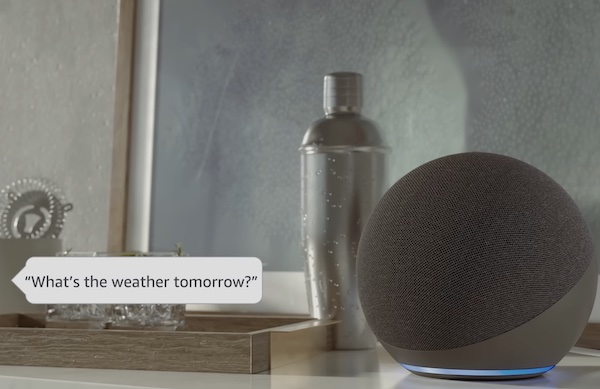Amazon Introduces New Alexa Skill Monetization Along with Developer Tools for Growth and Retention
Amazon last week announced new tools and programs for third-party Alexa skill developers to grow their user base, increase retention, generate revenue, and keep more of what they earn. While Google is retreating from its third-party voice app developer ecosystem with the sunsetting of conversational actions for the Assistant, Amazon is extending its investment.
Higher Revenue Share
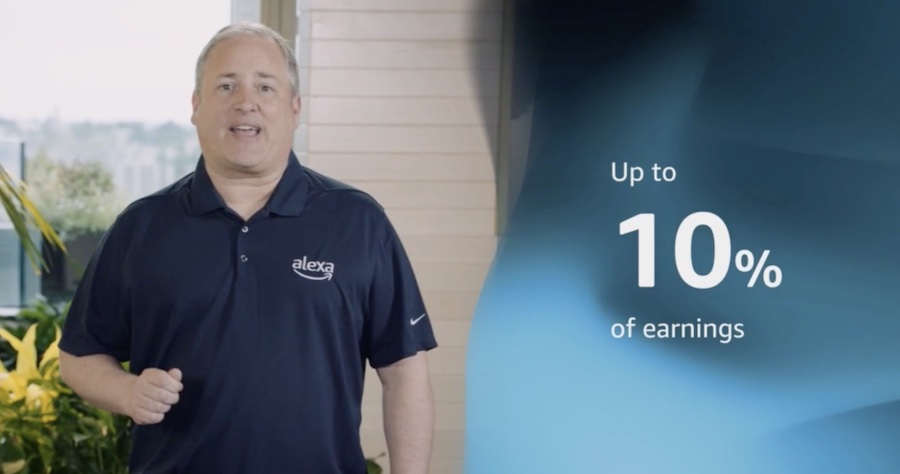
The most unambiguous benefit for developers is the change in revenue share for Alexa skills. Amazon announced in December that developers earning less than $1 million in annual revenue would no longer be forced to pay 30% of it in platform fees. The new figure as of Q2 of this year is 20% for the sub-$1 million earning skills.
However, Amazon is extending that 20% rate to all skills and announced at Alexa Live that skills making less than $1 million of revenue per year will also “receive up to 10% of earnings as a value back incentive…This incentive will be paid out in cash for 2022. In the future, these incentives can also be applied toward promotional credits,” said Jeff Blankenburg, chief technical evangelist for Alexa. The promotional credits will be for ads on Alexa smart displays that drive users to a skill.
SDAP Skill Quality Coach
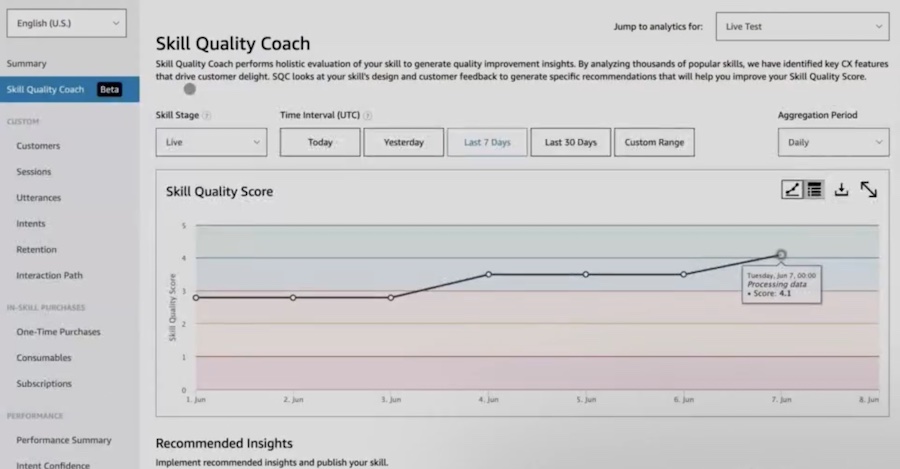
The new incentives and revenue sharing are part of Amazon’s Skill Developer Accelerator Program (SDAP). Skill Quality Coach is another feature. Launching first in the U.S., the solution offers personalized recommendations that Amazon believes will enhance the skill’s quality according to its identified best practices. Developers that act upon the recommendations will qualify for additional incentives in cash or promotional credits. The feature is available now in the U.S. developer dashboard.
“It breaks everything down. It evaluates your skill compared to things it has learned from thousands of other skills that are in similar categories, and it gives you a score between 1 and 5…They actually started doing this analysis back in the middle of June. I haven’t done anything differently in my skills, but the score has changed over time,” said Mark Tucker, an independent Alexa developer, Alexa Champion, and senior technical director at RAIN Agency, during an interview for the Voicebot Podcast. “As part of that, there is a section with recommendations. You can do this and skills that have done it have seen like a 20% increase in retention or usage or something like that.”
“The entire program is built around improving skill quality. There is no amount of marketing that can correct for a poor product experience. SDAP rewards custom skill developers for building high-quality skills. The program includes monetary incentives and promotion credits to increase skill discoverability to get more traffic,” said Amazon’s Jeff Blankenburg.
You Can Advertise Your Skills
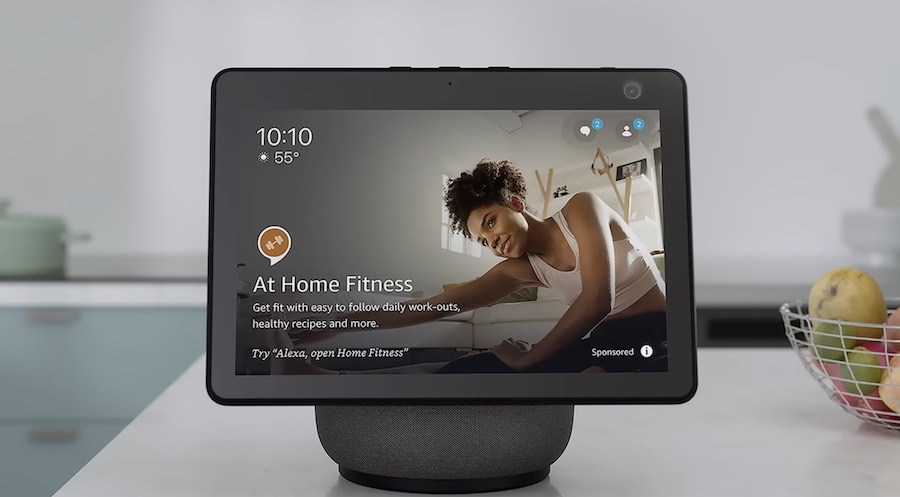
Alexa skill developers have long bemoaned the challenge of new user acquisition. While they could always advertise via traditional web and mobile channels, these involved switching the users over to the smart speaker for conversion. Deep links helped but still didn’t activate an Alexa skill. Instead, they delivered interested users to a landing page. The request all along has been for in-context advertising.
The best in-context advertising has been in-skill promotion. That enabled users to just say, “Alexa, open [skill]” and they had instant engagement. However, Amazon has thus far restricted this feature. Skill developers could promote skills they also had created from within other skills. The key workaround for this is media skills. These include Alexa skills for radio, podcasts, and streaming audio as well as flash briefings. This was a way for skill developers to access Alexa audiences and promote their skills even if they didn’t already have an audience for another skill.
Coming soon, “Promoted Skills will provide you with a new, simple but effective way to promote skills on Echo Show home screens,” says Amazon. “Coming later this year, you can set up promotional campaigns for your skill in less than five minutes. You will also be able to view performance and attribution metrics that are updated on a daily basis.”
Echo Show smart displays are advertising billboards already in tens of millions of homes. Today, Echo Show screens promote content, Alexa first-party features, and Amazon shopping recommendations. They also promote some third-party skills, but that is at the discretion of Amazon. The new Promoted Skills feature will enable skill developers to exert more agency around skill awareness building among consumers that already own Alexa devices.
Initially, ad formats will only be available on smart displays. An Amazon spokesperson indicated they did not have any plans today to offer similar advertising options on screenless smart speakers, but they might consider that in the future. You would think that the Alexa mobile app would be the next logical place for these to appear as they can be done without explicitly interfering with the voice assistant user experience.
A very attractive option would be from within Amazon’s mobile shopping app since it has access to Alexa and a far larger user base than Alexa devices. However, that is also not on the near-term roadmap according to Amazon.
Routines to Drive Customer Loyalty
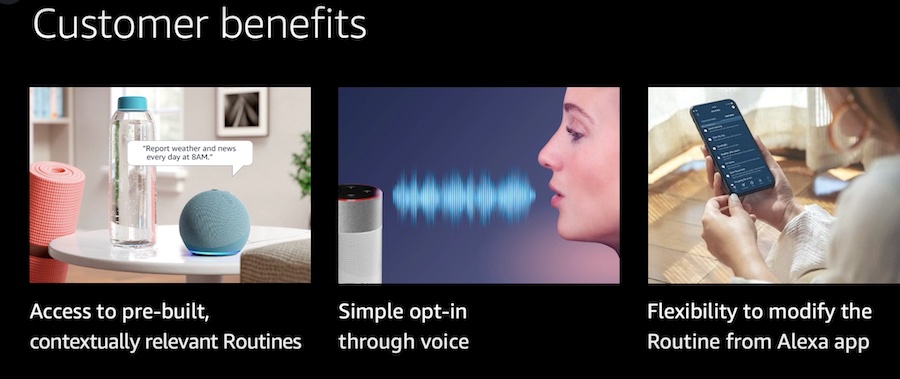
During Alexa Live, Amazon frequently mentioned the benefits for Alexa skills that become part of users’ everyday lives. To cement these relationships, Amazon is promoting the broader adoption of pre-built routines by skill developers. Alexa Routines Kit (ARK) will facilitate these solutions and enable skills to promote the routines to users. They will, in turn, be able to activate the pre-built routines by voice.
“To make this experience better for both customers and skill developers, we conceived the concept of pre-built Routines— offered through the Alexa mobile app and during customers’ voice interactions with Alexa. Customers can enable pre-built Routines with a couple of clicks in the Alexa app or through simple voice consent when Routines are offered during their interactions with Alexa,” said Amazon in a blog post.
Media brands NPR and All India Radio, fitness skill Endel, sleep sounds company Sleep Jar, and automaker Jaguar LandRover were among the beta period adopters of ARK. Routines can be voice-activated or be set based on triggers such as time of day.
Voice-Forward Account Linking
This awkwardly named feature suggests that account linking will be streamlined using voice. This is true to a degree, but a quick review of the demonstration from Alexa Live shows that it is not exactly simple or fast. The comparison set up in the video above shows the method for linking an account through the Alexa app. The demonstration shows the step of opening the app plus 12 taps and one typing of the skill name. This took just under a minute to complete (57 seconds). Granted, you would have to know exactly how to do this to complete the steps in a minute. My guess is that it took several minutes for most people.
The voice-forward account linking enables a skill to prompt the user via Alexa to consider account linking. If the user says “Yes,” a message will be sent to their phone with a code that they must repeat to Alexa. So, this is one app open and no taps. Just conversation. This step explains the term voice-forward. It is not voice-only. It is mostly a conversational interaction plus a step back to the phone. Once you have them on the phone it would seem like a simple link tap and confirmation would be more efficient than going back to the conversation to speak the code and confirm with Alexa.
Interestingly, in the demo, the entire process may have been more pleasant for the user, but it took 1 minute and ten seconds to complete. That is 13 seconds longer than the other “tap-tap-tap…” method. Let’s say most users take more than this to actually execute the app-based account linking. So, it may actually save time and be more pleasant. Still, it seems like some user experience streamlining could reduce the total time to a few seconds and not more than a minute.
Alexa Shopping Cart
Alexa Shopping Actions were announced in 2021. These features, “allow you to embed Alexa shopping features within your skill…Two of these actions, buy and add-to-cart, are now generally available. You can now enable customers to add recommended products to their Amazon cart or buy the product all without leaving the skill,” said Mark Yoshitake, director, Alexa Skills Kit and Multi-Agent. He added, “We’ve also started onboarding developers into the preview for Amazon Associates on Alexa where skill builders can learn up to 10% commission on qualified purchases referred from your skills.”
Later this year, skills will also be able to answer customer questions about those products, provide information on reviews, and enables users to add the products to their “wish list.” All of these features will be available through the new Alexa Shopping Kit which will also enable the surfacing of new product ideas around events and holidays.
I spoke about the Alexa shopping features in detail with Bahuhali Shete of Tiny Chef on the Voicebot Podcast in 2021. His skill was among the first dozen globally to test the features and he shares some data and a detailed breakdown of the process in our conversation.
Alexa Skill Deals
Amazon is determined to help developers increase in-skill purchases (ISP) in an effort to make them economically self-sustaining. One other feature in this regard is Alexa Skill Deals. Amazon shared that this feature offers developers “the ability to set up a discount on your In-Skill Purchase (ISP) products and Paid Skills through the Alexa Developer Console. These discounts can run across a developer-determined deal window lasting up to a year, and will be available to all customers.”
In other words, developers can offer a time window limited discount such as “50% off” for a day or season. This is a new tool to spur users into action and make the leap to payment from their status as a free user.
Sustainable Business
Jeff Blankenberg commented that Amazon’s key objective is to help developers “increase customer engagement, grow revenue, and create sustainable businesses.” To date, most skill developers have not been able to create sufficient revenue volume to sustain an ongoing business. Amazon long ago stepped in to help fill that gap by providing developer rewards in the form of cash payments for popular third-party Alexa skills.
The new features announced at Alexa Live may help Amazon as “sustainable businesses” won’t require the same level of cash rewards support paid directly to developers. However, these new features are also high priorities for developers. Most developers want to have self-sustaining businesses supported financially by users as opposed to Amazon. We still need to see these features in implementation but higher revenue share and new tools for driving growth are definitely positive developer-friendly steps.
You can see an extended discussion about the developer-focused announcements at Alexa Live in our recent Voicebot Podcast episode posted to YouTube.
Follow @bretkinsella Follow @voicebotai
10 Minutes On Alexa’s New Multi-Assistant Model with Voicebot’s Bret Kinsella (Reaction Video)
Amazon Announces ‘Age of Self’ Amid Developer Tool Upgrades at Alexa Live
Google Assistant Actions (Voice Apps) to Sunset, Focus Shifts to Android Apps


